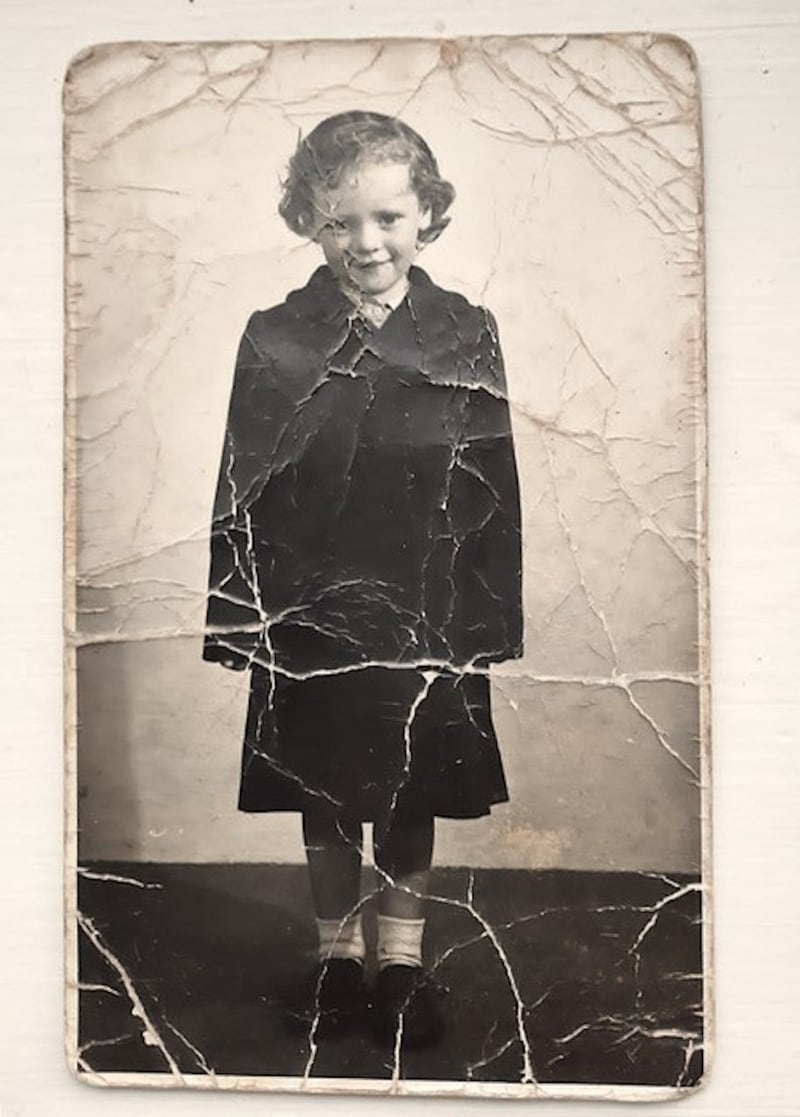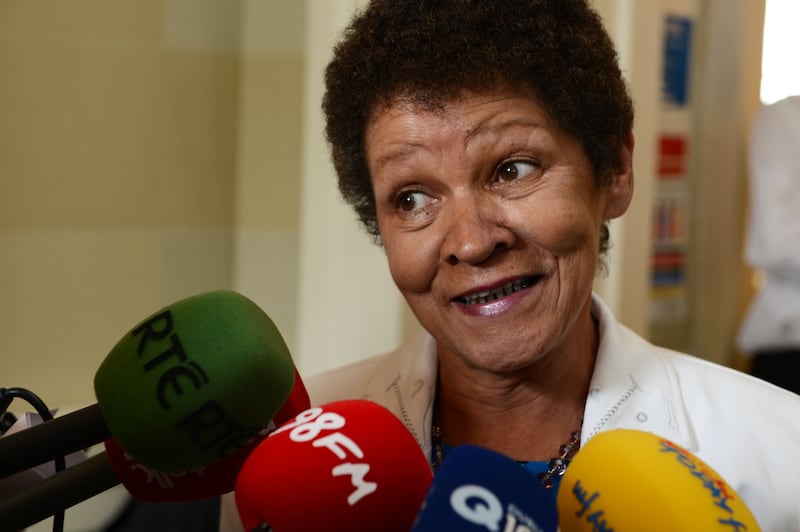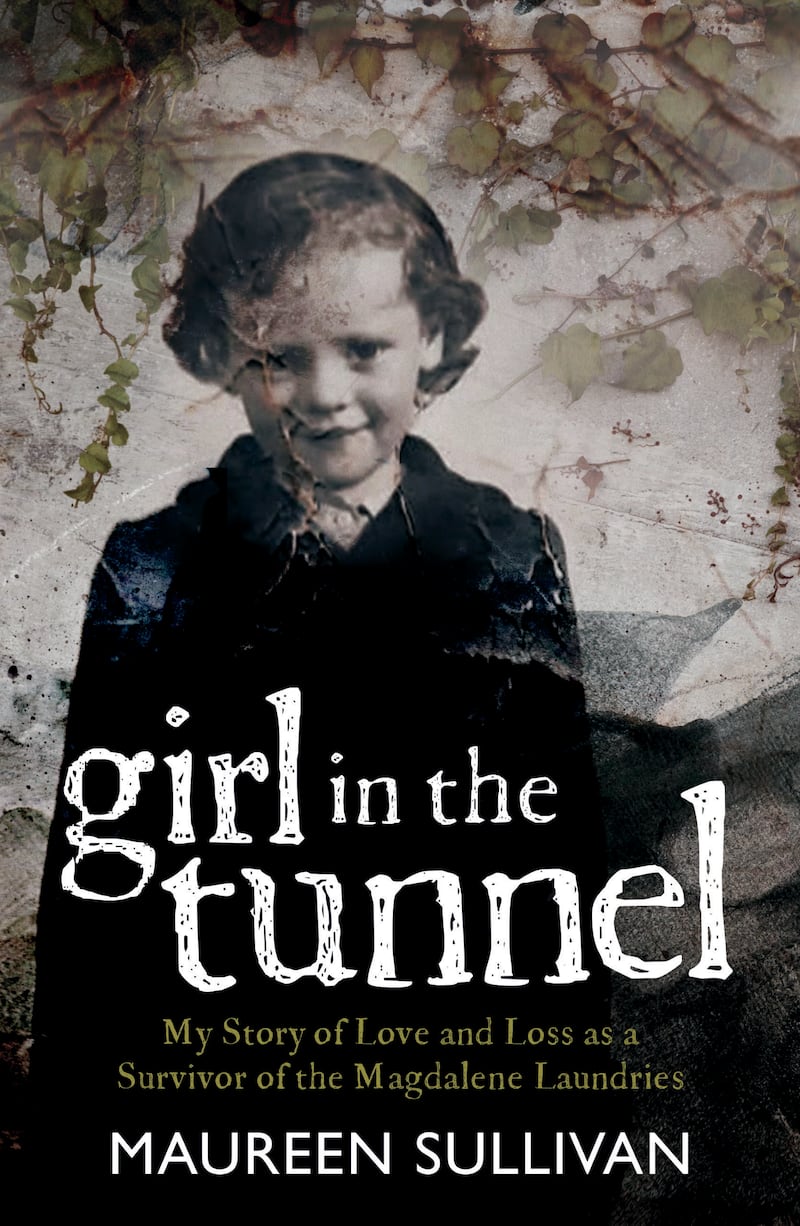Maureen Sullivan (70) is a strong woman. She has had to be. Probably the youngest person to have been held in a Magdalene laundry in Ireland, she was just 12 when she arrived at the Good Shepherd-run establishment at New Ross, Co Wexford, in 1964. Over the following four years she was transferred to another such laundry in Athy, Co Kildare, and then to a home for the blind on Merrion Road in Dublin.
That a girl so young should have been in a Magdalene laundry at all later perplexed many – not least members of the interdepartmental committee set up in 2011 to investigate the laundries, chaired by then-senator Martin McAleese.
“I found that anyone I ever went to see in the Dáil, and I went to see quite a lot of them, they’d ask me, ‘Why were you put in a Magdalene laundry?’ The very minute I said ‘Well, I was abused by my stepfather’, their pens would go down. Martin McAleese did the same thing. It’s like they can’t deal with it. They’re just not able to. A lovely man, I’d say in fairness to him [McAleese], I’d say he was in a bit of shock.”
But if they were shocked to find that a child had been put in a Magdalene laundry, the reason why Sullivan found herself in that situation was even more shocking. Here is how she recalls it, from her recently published book Girl in a Tunnel.
READ MORE
She and Arnie Stephenson, in later life her employer at Irish Skincare in Carlow and a great supporter, met a nun who had denied at a previous meeting that Sullivan had ever been in the New Ross laundry. She insisted, instead, that Sullivan had attended St Aidan’s school near that laundry.

This second time, the nun looked at Stephenson “... and then put her head down. She stared at her notes, moved them around under her fingertips and then she said. `You must understand...’ she paused and shook her head. ‘Maureen was an abused child’.”
The nun continued: “They believed you could corrupt the innocence... of the other children,” she said, “if you mixed with them.” Sullivan interjected: “Sister, are you telling me they put me into the laundry and... all of it... because they thought I would tell the other children about what my stepfather done to me?” The nun continued: “It was wrong,” she said, nodding, “but yes, that’s what they did.”
Even at 12 I thought that my mother went down to the hospital and a nurse gave her a baby
— Maureen Sullivan
It was confirmation that Sullivan was incarcerated in a Magdalene laundry, at such a young age, just for being sexually abused by her stepfather. She had, in fact, been doubly abused.
The tunnel of the book title was where Sullivan was hidden if inspectors or outsiders arrived at the laundry and might ask questions. Once, when she was 14, she was forgotten about in that tunnel. She became hysterical. It took days for her to get over it.
At New Ross there was “no schooling, just the laundry every day, from 6am to about 9pm, with cleaning duties in the evening and at weekends”. The women there were adults, many elderly.
Far from being a threat to the innocence of other children, Sullivan was so ignorant of the basic facts of life that she thought babies came from the hospital. “Even at 12 I thought that my mother went down to the hospital and a nurse gave her a baby.” And her mother went to that hospital many times – 13 to be accurate. Three of those times were before Sullivan’s father died. Her mother was then 19 and pregnant with her. Her mother then married a second time.
[ Nuns who ran Magdalene laundries have not contributed to redress for womenOpens in new window ]
Always small for her age, as well as stressed and malnourished, Sullivan had no idea what was happening to her when she had her first period at about 15. She screamed: “I’ve been stabbed.” There was consternation. “‘I’ve been killed’,” I said, I felt weak, hearing the words, ‘I’m stabbed through’.” A nun came on the scene. She “shook her head, rolled her eyes”. The nun “spoke at me using words I knew from prayers: womb, fruit, virgin. I didn’t know anything of what she was talking about. She told me the blood was my cycle and it would come from now on, once a month.”
A regular visitor at the Magdalene laundry in New Ross was “Mrs Ryan”, described as a cousin of US president John F Kennedy. She was “a sort of celebrity in the community, more so since he was dead, and there would be great ceremony when she came to the convent each time”. She would leave a tin of sweets for the women, which “rarely made it to us”.
Once “she asked the nuns in front of us all where we went on excursions” and was told by a nun that the laundry ran every day. “Mrs Ryan interrupted her. ‘Now please, Mother,’ she said, ‘everyone needs a day out from time to time.’” The result was a day at the seaside for the women. It was the first time Sullivan had seen the sea.
Eventually she returned to Carlow and worked in the White Star laundry there before heading for London with her brother Paddy. She worked at everything and anything, including on a building site, “then the Irish Centre in Camden Town helped me. I got a room and a couple of rotten jobs and survived. Then I met my daughter’s father, my first husband, from Northern Ireland. I had my daughter and got a council flat. That was the first thing I ever owned. It meant the world to me.”

The marriage did not work out. “Then I had to bring my daughter up on my own, try and get bits of jobs. It was very, very hard. You always had this past in your mind. You couldn’t say where you were, where your education finished.”
I had to keep all that bottled up inside me. I felt ashamed because it was like it was my sin. That’s the way I was made feel
— Maureen Sullivan
In time she remarried, this time to a man from Westmeath, and they had a son. In 1988, matters came to a head. “I couldn’t get a decent job because I didn’t have the education and it just all hit me one day.” She took an overdose. “I was taken into hospital. I was got in time and was pumped out, and the rules there was if you try anything like that you have to go for counselling. I didn’t know what counselling was.”
She “did very well. A Scottish lady, she was a fantastic woman and very good to me. It was the first time I ever spoke about what happened me since I was 12 until then, when I was 37 years of age. I had to keep all that bottled up inside me. I felt ashamed because it was like it was my sin. That’s the way I was made feel.”
[ Younger Magdalene survivor to seek compensation for loss of right to educationOpens in new window ]
London “was getting rough then, so I came home. I rang my husband – he was in Germany at the time – and I said to him I’m going to Ireland. He said he would be working in Germany for another year and I said, ‘That’s up to you. I’m putting the house up for sale and I’m going to Ireland’. I already had bought it off the council before I met him.”
However, back in Ireland “the past started to flash back at me.” She went to a healing woman in Tullow, Co Carlow. “She was very good, a lovely, lovely lady.” Stories about what had happened to children in orphanages, industrial schools and reformatories “started to spill out in the news. I was ringing my friends in England, they were ringing me. We never spoke about [what had happened], ‘til it came out. People started to feel ‘We can talk about that. That was done to us’.”
She remembered seeing the documentary Dear Daughter in 1996 about abuse at the Goldenbridge orphanage in Dublin involving the late Christine Buckley. “I will never forget it. I think I must have cried for two days. I imagined how she [Buckley] felt what was done to her as a mixed-race lady, how they were treated everywhere at that time. My heart just went out to her. And then I started speaking out about the Magdalenes.”

She has continued to do so. “The HAA [Health Amendment Act] card. We never got that. We just got an ordinary medical card that we already had,” she said.
The HAA card was recommended by Mr Justice John Quirke, who prepared a compensation scheme for women who had been in Magdalene Laundries. The card gives holders access on a statutory basis to a wide range of primary care and hospital-based services.
[ 'The hunger was awful . . . the humiliation terrible'Opens in new window ]
Sullivan has also been involved in marking the graves of women who had been in the laundries. “I don’t believe in these unmarked graves for survivors, still being treated like nobodies.” Recently, for instance, “we got a grave marked in Carlow”, she said.

Last summer, she and Independent Dublin City Councillor Mannix Flynn were central to unveiling the Journey Stone at the Little Museum of Dublin on St Stephen’s Green to honour “the great courage, integrity and dignity of the women” who had been in the laundries.
The Journey Stone was made possible by the 2011 single From a Distance to honour women who had been in the Laundries and performed by Sinead O’Connor, Tommy Fleming, Daniel O’Donnell, Brian Kennedy, Moya Brennan, Ann Scott, Charlie Landsborough, Patrick Sheehy, Lumiere and the Glasgow Gospel Choir. “What an amazing bunch of artists to be so kind to do this wonderful single,” she said.
Girl in the Tunnel: My Story of Love and Loss as a Survivor of the Magdalene Laundries is published by Merrion Press

















